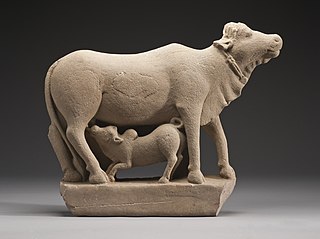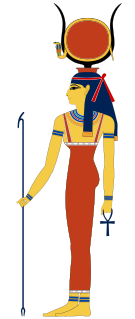 W
WDue to the multiple benefits from cattle, there are varying beliefs about cattle in societies and religions. In some regions, especially most states of India, the slaughter of cattle is prohibited and their meat may be taboo.
 W
WAl-Baqarah is the second and longest chapter (sūrah) of the Quran. It consists of 286 verses (āyāt), 6,201 words and 25,500 letters.
 W
WThere are varying beliefs about cattle in societies and religions with cows, bulls, and calves being worshiped at various stages of history. As such, numerous peoples throughout the world have at one point in time honored bulls as sacred. In the Sumerian religion, Marduk is the "bull of Utu". In Hinduism, Shiva's steed is Nandi, the Bull. The sacred bull survives in the constellation Taurus. The bull, whether lunar as in Mesopotamia or solar as in India, is the subject of various other cultural and religious incarnations as well as modern mentions in New Age cultures.
 W
WIn ancient Mesopotamian mythology, the Bull of Heaven is a mythical beast fought by the hero Gilgamesh. The story of the Bull of Heaven has two different versions: one recorded in an earlier Sumerian poem and a later version in the standard Akkadian Epic of Gilgamesh. In the Sumerian poem, the Bull is sent to attack Gilgamesh by the goddess Inanna for reasons that are unclear. The more complete Akkadian account comes from Tablet VI of the Epic of Gilgamesh, in which Gilgamesh rejects the sexual advances of the goddess Ishtar, the East Semitic equivalent of Inanna, leading the enraged Ishtar to demand her father Anu for the Bull of Heaven, so that she may send it to attack Gilgamesh in Uruk. Anu gives her the Bull and she sends it to attack Gilgamesh and his companion, the hero Enkidu, who slay the Bull together.
 W
WAccording to the Bible, the golden calf was an idol made by the Israelites when Moses went up to Mount Sinai. In Hebrew, the incident is known as ḥēṭ’ ha‘ēggel or the Sin of the Calf. It is first mentioned in Exodus 32:4.
 W
WHathor was a major goddess in ancient Egyptian religion who played a wide variety of roles. As a sky deity, she was the mother or consort of the sky god Horus and the sun god Ra, both of whom were connected with kingship, and thus she was the symbolic mother of their earthly representatives, the pharaohs. She was one of several goddesses who acted as the Eye of Ra, Ra's feminine counterpart, and in this form she had a vengeful aspect that protected him from his enemies. Her beneficent side represented music, dance, joy, love, sexuality and maternal care, and she acted as the consort of several male deities and the mother of their sons. These two aspects of the goddess exemplified the Egyptian conception of femininity. Hathor crossed boundaries between worlds, helping deceased souls in the transition to the afterlife.
 W
WThe red heifer, also known as the red cow, was a cow brought to the priests as a sacrifice according to the Torah, and its ashes were used for the ritual purification of Tum'at HaMet, that is, an Israelite who had come into contact with a corpse.
 W
WTauroctony is a modern name given to the central cult reliefs of the Roman Mithraic Mysteries. The imagery depicts Mithras killing a bull, hence the name tauroctony after the Greek word tauroktonos. A tauroctony is distinct from the cultic slaughter of a bull in ancient Rome called a taurobolium; the taurobolium was mainly part of the unrelated cult of Cybele.